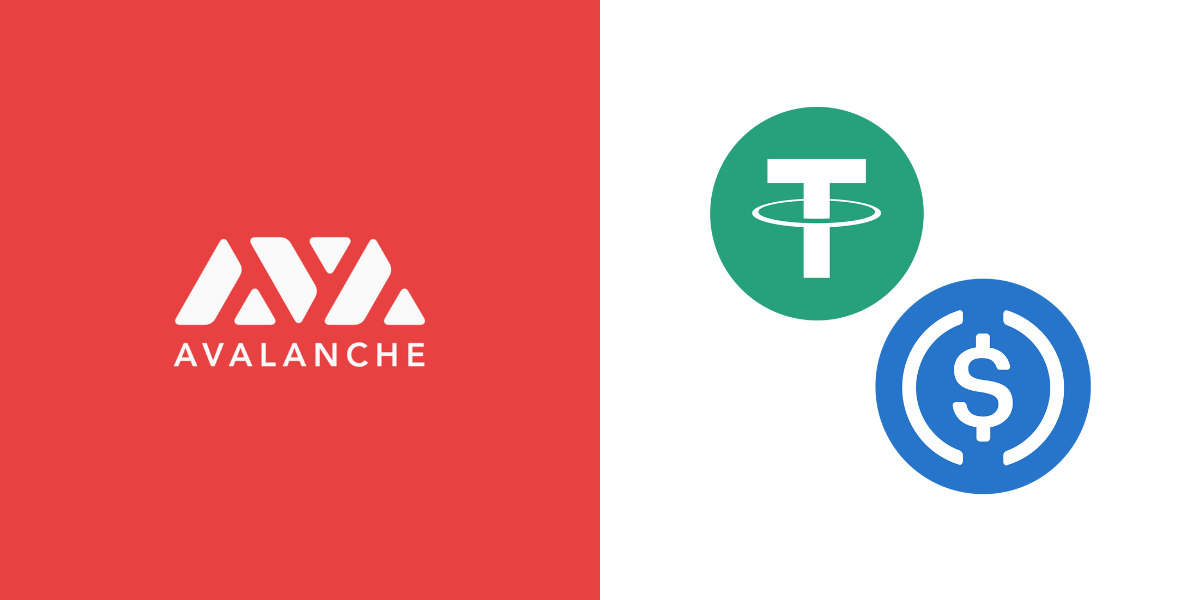Stable coins on Avalanche have undergone multiple upgrades since the introduction of the Avalanche-Ethereum Bridge (AEB). The AEB optimized the DeFi experience on Avalanche and allowed users to bridge over stable coins such as USDT and USDC.
How did USDT.e become USDT and USDC.e become USDC?
However, with the introduction of the new Avalanche Bridge (AB) in 2021. Users were encouraged to use the AB bridge and wrapped stable coins for a better experience over the older bridge. This meant faster transaction speeds, lower fees and more. The new wrapped versions were named USDT.e and USDC.e to differentiate from the assets of the old AEB that would eventually be phased out of use.
With the continued success of Avalanche, the teams behind USDT and USDC wanted to deploy their native tokens onto the network. Now that they’re here, users are encouraged to switch over from USDT.e and USDC.e to the native USDT and USDC tokens officially deployed on Avalanche.
What is the difference between a wrapped stable coin and a native one?
To put it simply, with the introduction of native USDC and USDT on Avalanche. A user can now mint USDC or USDT on Avalanche through the official entity that created the stable coin (Circle for USDC and Tether for USDT).
Previously, the process to use USDT and USDC on Avalanche would include minting USDT or USDC on Ethereum, bridging it over to Avalanche and receiving a wrapped token (USDT.e or USDC.e) that signified the stable coin that existed on the Ethereum network. If you wanted to use a Circle product, for example a Circle deposit address that accepts USDC, you would need to bridge your USDC.e back over to Ethereum in order to retrieve your native version of USDC and spend it.
By having the native issued USDC on Avalanche. There is no need to mint it on a different network such as Ethereum and move it over to Avalanche using a bridge. Instead, you can mint it directly on Avalanche through Circle and even use it with Circle products. Such as sending USDC to a Circle deposit address directly from the Avalanche network.
The same concept applies to the USDT stable coin that is provided natively by Tether on Avalanche.
The increased usage of native stable coins on Avalanche
Following the introduction of native USDC and USDT on Avalanche, many users have switched over to using the native stable coins over their bridged counterparts.


The chart above depicts how we’ve seen the use of USDT.e and USDC.e fall dramatically since the implementation of native USDC and USDT around the start of 2022. The native tokens finally flipped the bridged tokens in supply during April of 2022.
This was an expected outcome since the native tokens were introduced. On top of the reasons mentioned earlier, the tokens minted and issued directly on Avalanche aren’t subject to potential bridge hacks or exploits. Since the beginning of 2022, there have already been multiple large-scale and minor bridge hacks. These include the Ronin Bridge, Wormhole Bridge and Nomad Bridge, which have collectively lost nearly $1 billion in funds.
Many users choose and are encouraged to use native tokens over wrapped ones to eliminate the need and inherent risk that comes along with using a bridge.
CryptoRefills allows payment with native USDC and USDT on Avalanche!
At CryptoRefills, we always strive to give you the best user experience. Like upgrading from the AEB assets, to the new AB assets and now to the native stable coins.

We’re always improving our payment methods and providing ways to use cryptocurrency in your daily life. This includes ways to spend crypto on groceries, phone bills and more!
Disclaimer: This post is for informational purposes only, and none of the information above is intended to be legal, investment, financial, or other advice.
